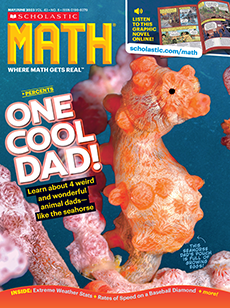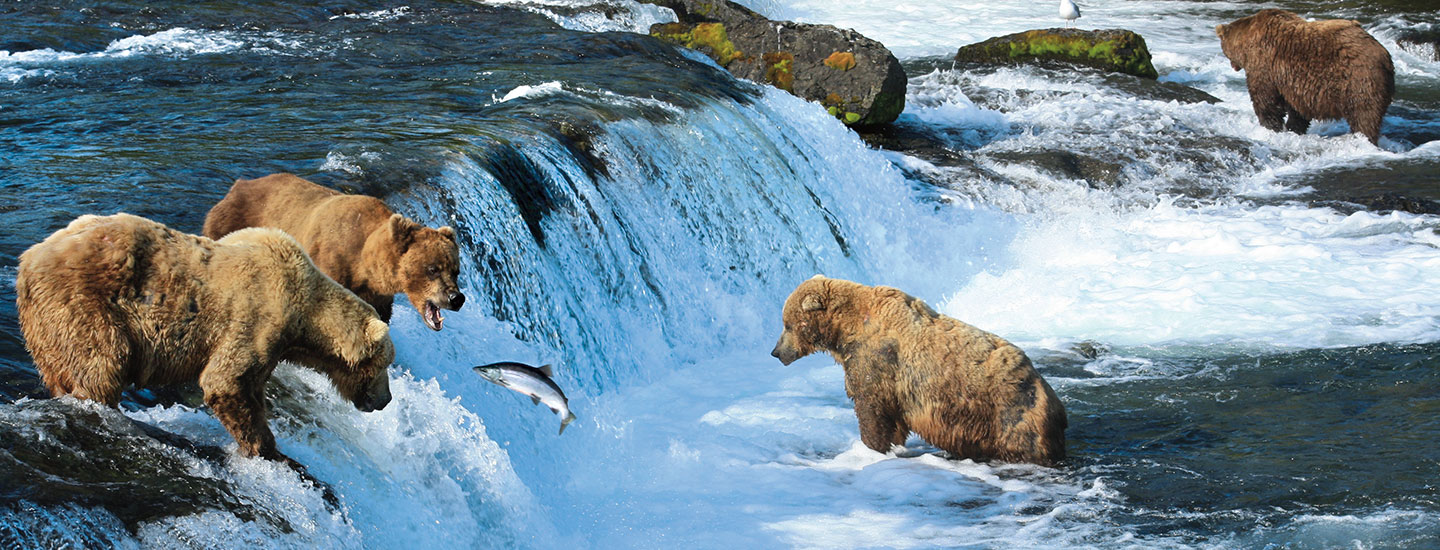It’s an early fall morning in Alaska at Katmai National Park and Preserve—but it’s hardly quiet. Already, hundreds of brown bears feast at Brooks River’s all-you-can-eat salmon buffet. Younger bears wade into the water, swatting at salmon as the fish swim upstream. Older, wiser bears stick to the shallows, scavenging for dead or dying fish—saving themselves from exerting excess energy fishing.
Every minute counts, because each bear needs to increase its bodyweight by 30 percent before winter comes. The more weight they can gain, the better.
“I once watched a bear catch and eat over 40 salmon in a day,” says Mike Fitz, the resident naturalist with explore.org and former park ranger at Katmai National Park. That bear’s meal was about 180,000 calories—roughly the same as 400 quarter-pound hamburgers!
It’s an early fall morning in Alaska. But it’s already busy at Katmai National Park and Preserve. Hundreds of brown bears are gathered at Brooks River. They’re feasting on an all-you-can-eat salmon buffet. Younger bears wade into the water and swat at salmon as the fish swim past. Older, wiser bears stick to the shallows. They look for dead or dying fish, which are easier to catch.
Every minute counts. That’s because each bear needs to increase its body weight by 30 percent before winter. The more weight they gain, the better.
“I once watched a bear catch and eat over 40 salmon in a day,” says Mike Fitz. He’s a naturalist with explore.org, and former park ranger at Katmai National Park. That bear’s meal was about 180,000 calories. That’s about the same as 400 quarter-pound hamburgers!

